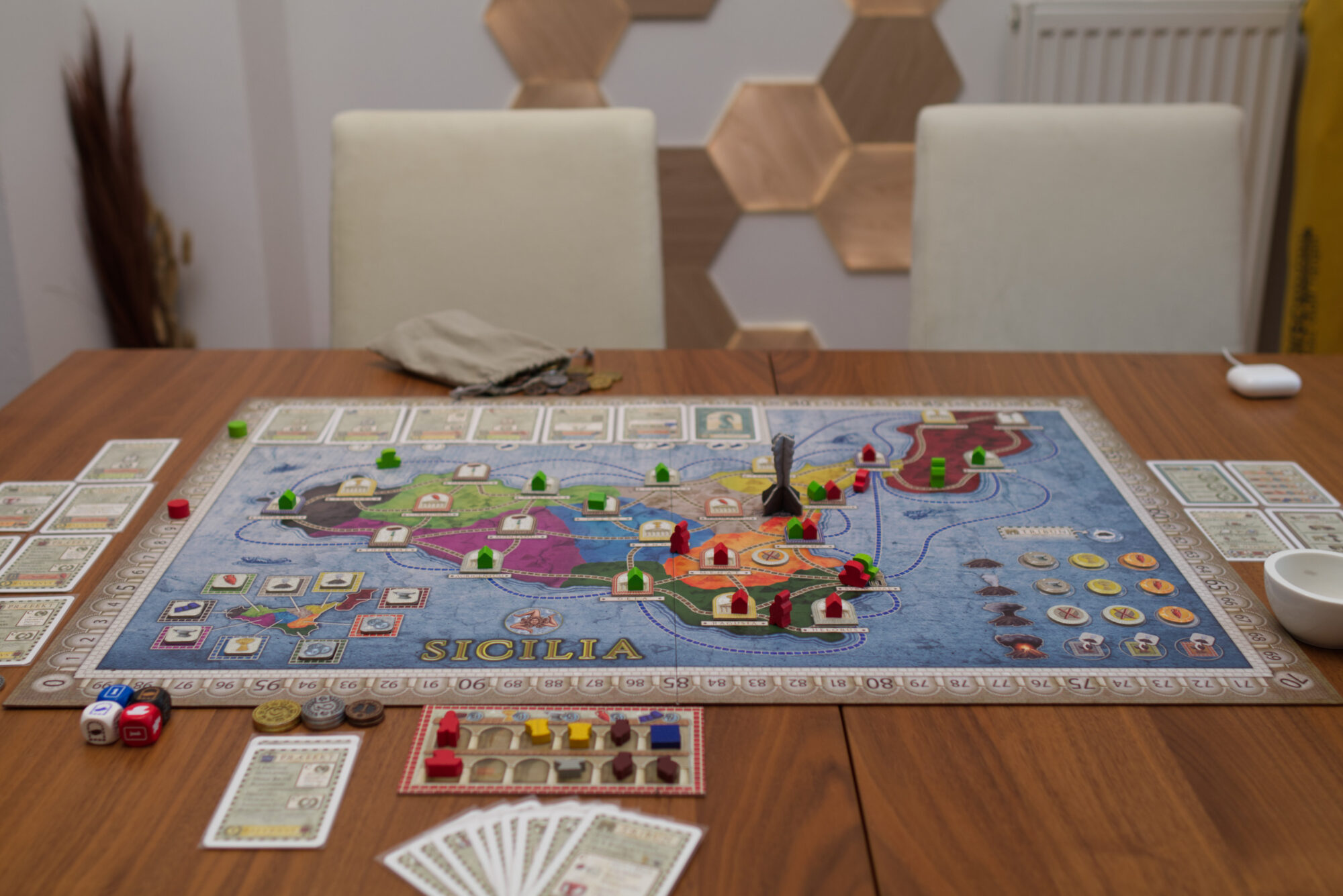There are few auto-buys I have in my life: a new Matthew Reilly novel, a month of Disney Plus whenever a new season of the Mandalorien is on, … and Concordia expansions. I came to Concordia rather late and at that point, my group of friends had already moved on to other games. So it was quite fortuitous circumstances that let me down the Concordia rabbit hole: I heard on a podcast that MacGerdts was designing a solo automa expansion and I had a lot of solo time on my hand. That expansion turned into Concordia Solitaria, for me still one of the benchmarks of what good automa design can achieve. It’s puzzly, elegantly simple, challenging. Its only downside was that there was no variability in the automa’s behaviour itself and therefore I bought more and more maps to have fresh motivation to play yet another round of Concordia.
At this point, I own pretty much all there is for Concorida, the exception being the forum tile mini expansion (because I don’t like those anyway). So when it was announced a new map would come out, of course I was curious. I had the chance to play a prototype of Roma, one of the two new maps in this expansion, three months before the official release at SPIEL Essen, but Sicilia (the map on the reverse) was completely new to me. Now, a couple of solo plays in, I believe I have a good enough feel of the maps to give you some first impressions and convince you why you should probably pick up a copy.
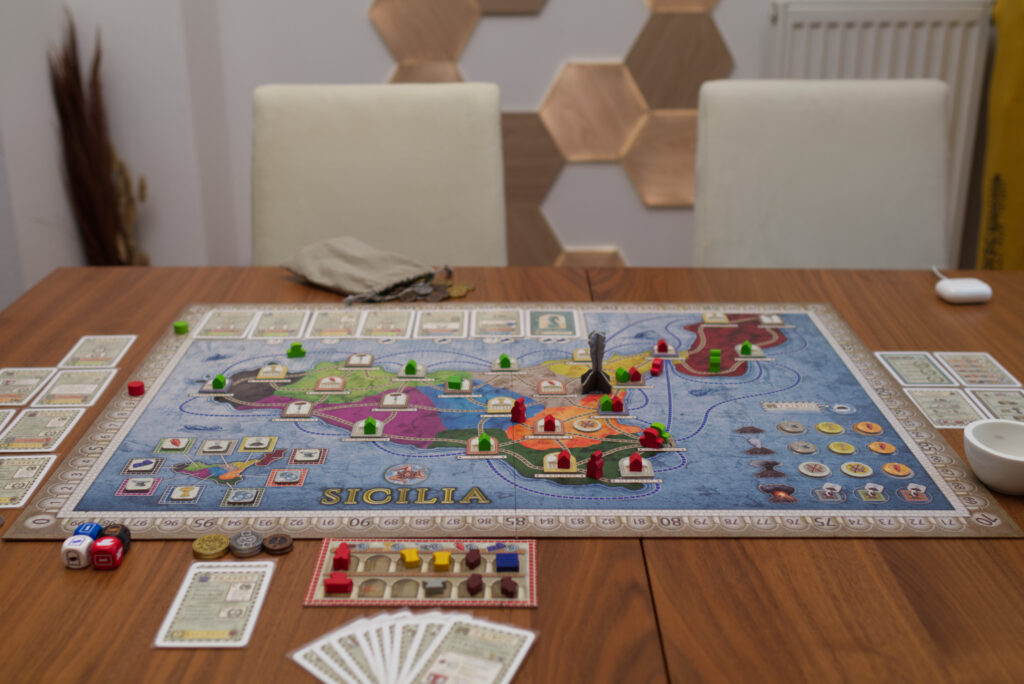
Roma
Taking a quick look, any Concordia player will instantly notice that this map breaks the standard Concordia formula in a number of ways. The regions are now districts within the walls of the city of Rome. They have a minimum of three and now an – up to now unheard of – maximum of four “cities” per region. Land colonists start in a gathering area towards the lower left of the map and outside the city. On their first move, they can enter through one of four city gates. There are also no sea ways or sea colonists on this part of the map. Instead, they have a separate track at the bottom of the board.
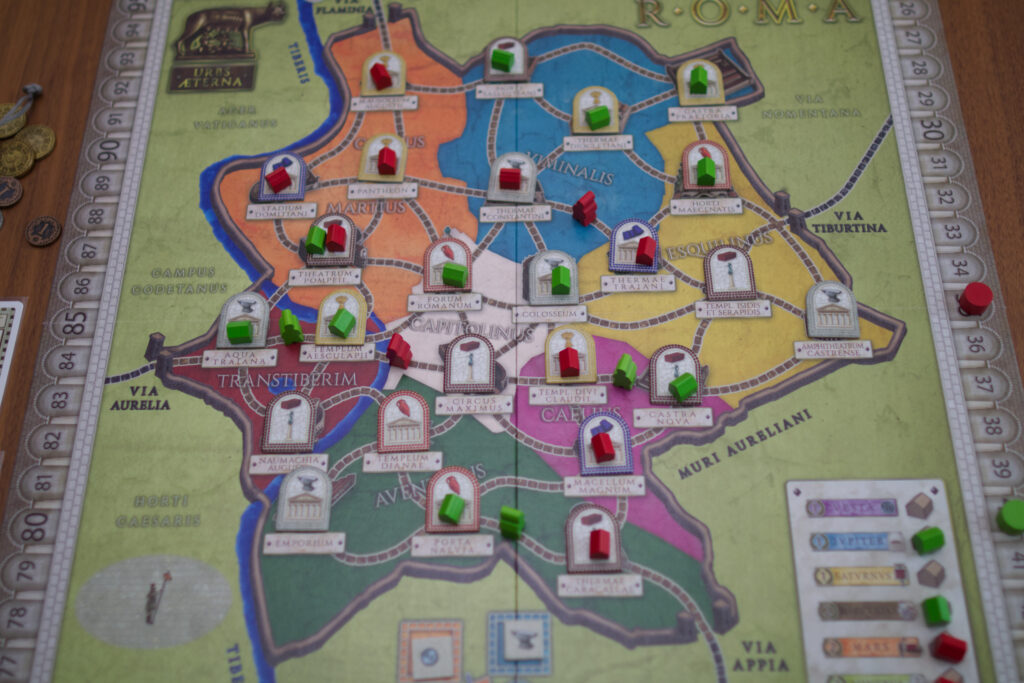
During an architect action, instead of spending a movement point on a land colonist, players can spent a point on a sea colonist to move it any number of steps forward on this dedicated track – but only up to one movement per turn per colonist. If the target field shows a resource or money, the player immediately gets that bonus. On other fields, there are opportunities to build on out-of-town building spots that are mostly there for specialist scoring (they don’t produce during a Prefect action but do for specialist actions). The final space on the track allows players to do an immediate one-time scoring of a goddess, similar to how they are scored at the end of the game. The player also places one house to mark the scored god (also bringing them one house closer to ending the game) which makes subsequent players only score half the bonus for the same god.
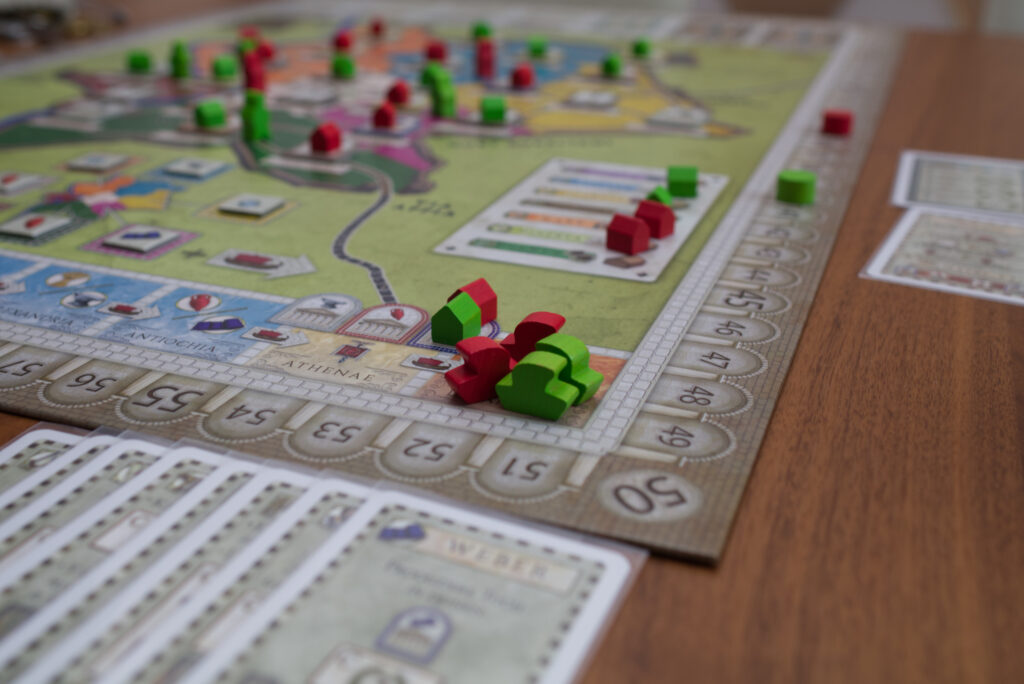
Here comes the interesting part: when I played the prototype of Roma, all those elements were already in place and yet, it had left me cold. There was something off about it and I rarely ever used the ship track because architecture movement points within the city proofed too valuable to me. But once again Mac Gerdts has shown his neck for polishing games into their final versions. The difference a few minor tweaks have made between the late prototype and the final version is astonishing.
The smartest change was to add a bonus of one free ship movement whenever a player uses the Prefect to replenish the region productions. This leads to a super interesting change in balance with regard to base Concordia as doing very early replenishing can now make sense. The player may only get 2-3 coins off it, but the free ship movement can – if their sea colonist is in the right spot – be converted into a free resource which can have huge effects for breaking the standard cycle of Concordia actions. Instead of using Mercator to get that one resource you need to buy a special card or built at a certain location, you can replenish the market and might be able to get the resource that way. Or sometimes you need just 2-3 more coins, and now instead of producing and then selling stuff, you can opt for using the prefect to get the few coins you need but also have a resource that might enable something completely new for you.
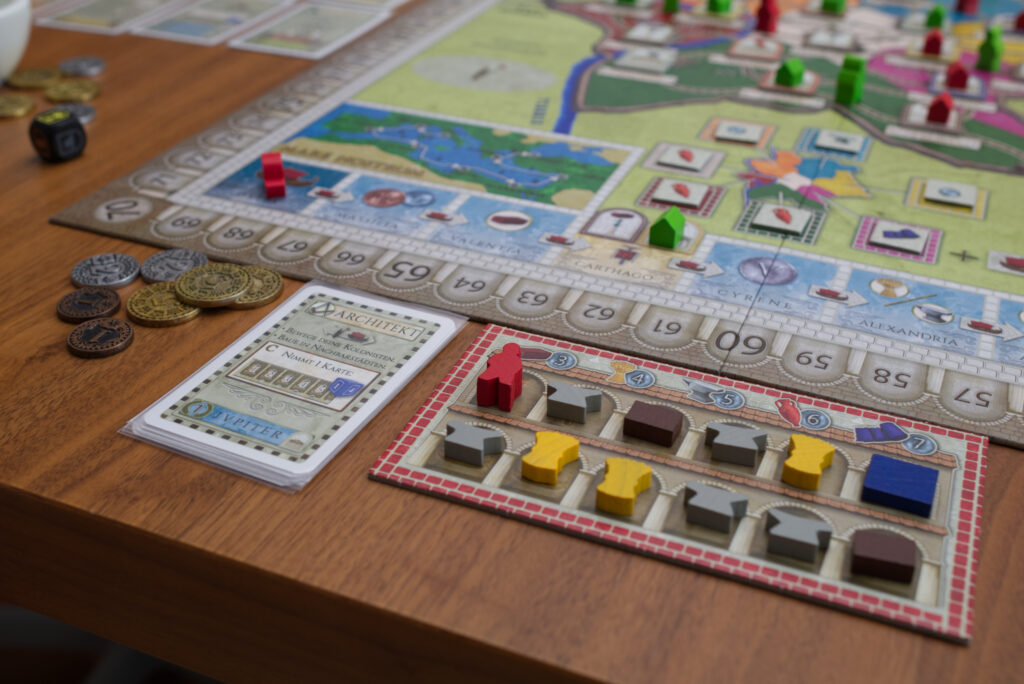
Having the extra building opportunities on the ship track also shifts the balance of other cards. Specialist can be more valuable as there is one additional building spot per resource (e.g. the vintner can now max out at 20 VP instead of 15VP). Similar subtle effects can be seen in other areas. For example, the 4 “cities” districts can tease players to concentrate on fewer regions (devaluing Saturnus for scoring) but lead to huge productions of up to 6 resources. Especially considering that the other effects incentivise players to more often than usual replenish the production tokens can lead to an unusual amount of resources coming in.
That in turn encourages players to build colonists faster to empty up room in their warehouses, making the colonist card more valuable than before. In general, there is an interesting shift in balance which isn’t so overpowering that old strategies wouldn’t work anymore, but it becomes even more important to read the board and double down on what you are doing. It might be sensible to completely ignore Saturnus cards because you are only in 2-3 regions for most of the game.
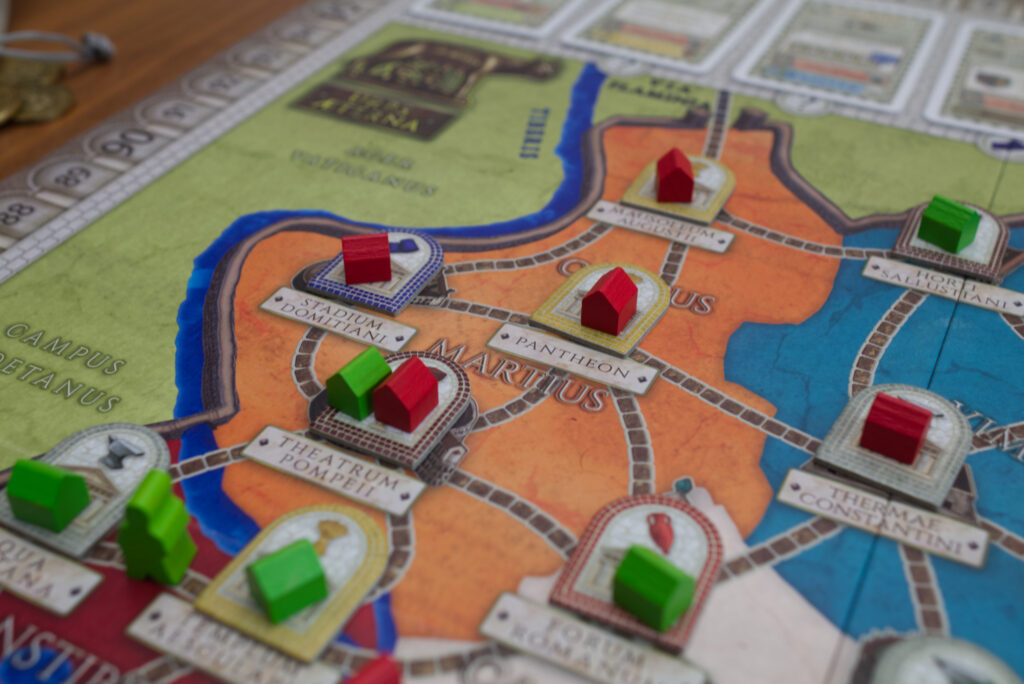
Sicila
Sicila on the other hand looks more like the maps we are used to from Concordia: an island with regions of 2-3 cities each, some nice waterways around it. However, there are three regions that are special due to their location next to the volcano Etna. During setup, a different set of region bonus tokens is used that contains more money on the back compared to the standard tiles. Also a number of volcano tiles are shuffled face down. These contain four tokens per each of the three regions and on higher player counts additional neutral tokens. Whenever a player uses their Tribune, they draw such a tile and reveal it. The neutral tiles provide a small bonus (e.g. money, brick) but have no other effect. The region tokens similarly provide a one-time resource bonus (food, iron, wine) but are kept on the main board.
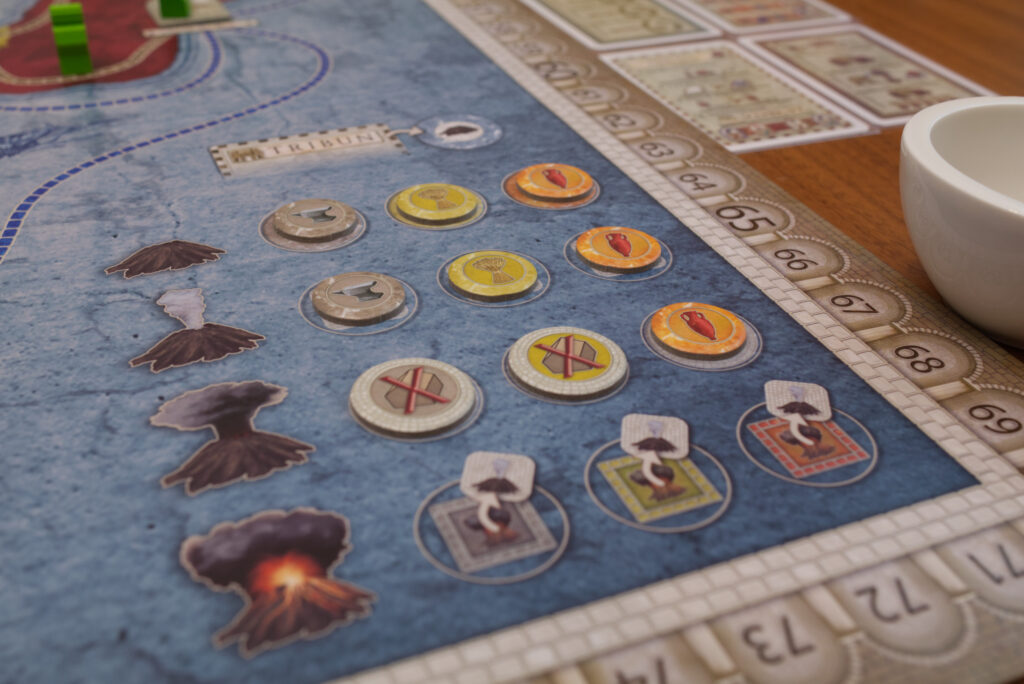
In the lower right corner of the board, there are three columns representing the three regions next to Etna. Whenever a token is drawn, it is placed on the topmost empty spot of that region, worsening the conditions there. Nothing happens on the first token. The second volcano token causes the region bonus token for that region to be replaced with one that no longer shows a bonus. From now on, if a player prefects in that region, they only get what their cities produce.
The third stage adds a token to the region that symbolises that new buildings can no longer be built in this region, and that effect stays for the rest of the game! The fourth and final stage is that not only the region cannot be built in anymore but also it can no longer do productions. No productions anymore, at all!
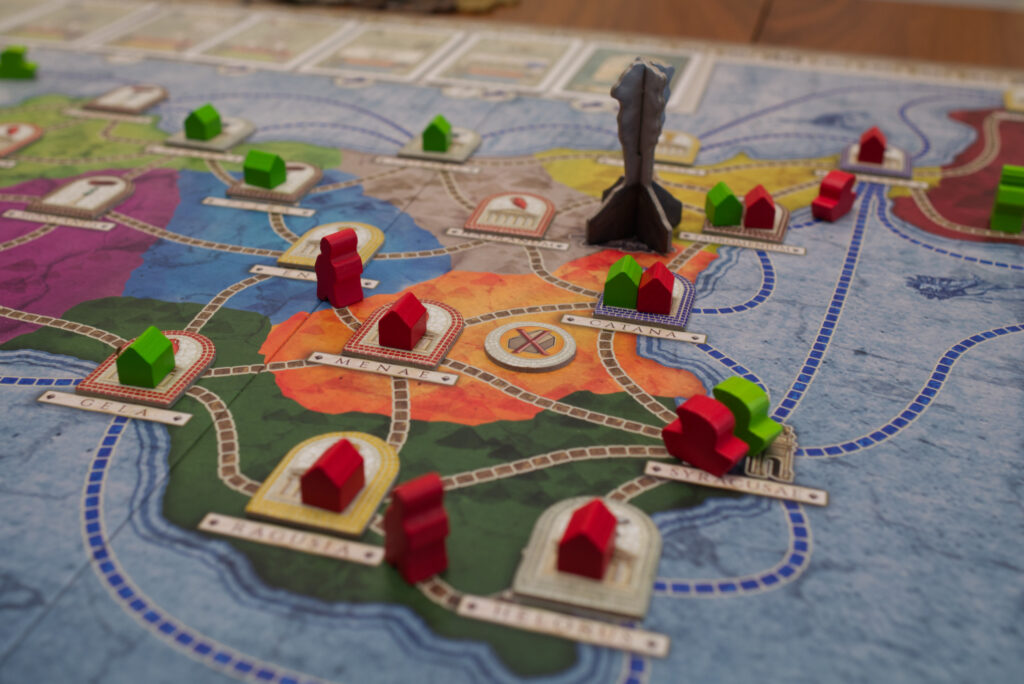
As with Roma, all of this has multiple effects on the rest of the game mechanics: getting the resource bonus makes it much more viable to do an early Tribune. Heck, if you are lucky, it might even give you the resource you need to be able to push out another colonist during that Tribune! But the biggest effect is this self-constricting playing area which makes Sicilia feel like a cross between the Italy map and the Creta map, two of my favourite maps to play on. Depending on which resources are associated with the regions during setup, the three volcano regions might become totally uninteresting in one game (if they only have corn or brick) or might be high risk high reward regions if they contain lots of cloth cities. Additionally, a number of volcano tokens are already drawn and revealed during setup, devaluing certain regions from the get go.
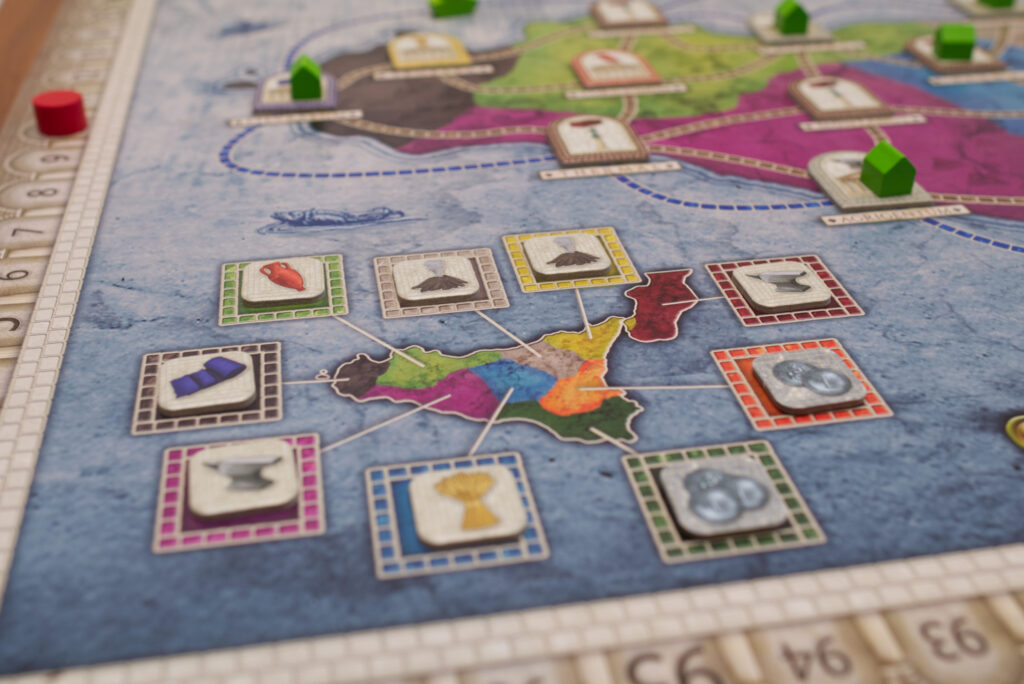
All of this adds a – for Concordia – unusually high amount of randomness to the game. It’s like a nice stew where someone suddenly has put a huge dash of hot sauce in it. If you’ll like it, you’ll love it. If you don’t, you won’t.
Conclusion
I’m pleasantly surprised with the final release version of this expansion and how many subtle new doors have opened for twists and turns to previously established strategies. Especially for solo and lower player counts, it injects a new level of excitement and replayability that previously was missing from Concordia itself and came from the player interaction of a larger group. Of course it’s the latest map, so an amount of my enthusiasm potentially can be contributed to the fact that I know older maps so well and they have become a little stale for me. Still, I’m pretty confident in saying that Roma / Sicila will end up in my top three maps together with Creta and the Italy/Balerica map (as a purchaser of the newer Venus base box). For those that got the older standard base box and therefore already owned Italy, I would put Roma / Sicila even above Balearica because the fish market never really clicked for me (though I do like the layout of the map).
The only things I would critic are minor issues – even the word issue is too strong here. For example, this might be the first time I ever had to consult google maps to resolve a rules dispute! The way the map is drawn, one might argue that ships can pass through Messana or not. But in real life, there is actually a straight between the two land masses, so allowing it is likely the right thing to do. Also in the Solitaria rules for Roma it says to move a sea colonist every time Contrarius builds a house. A clarification if that is also true for the first house Contrarius builds during setup on Veteran level would have been nice. Otherwise the rules are well written and surprisingly short as always. The integration for Concordia Solitaria is also well done and super minimal.
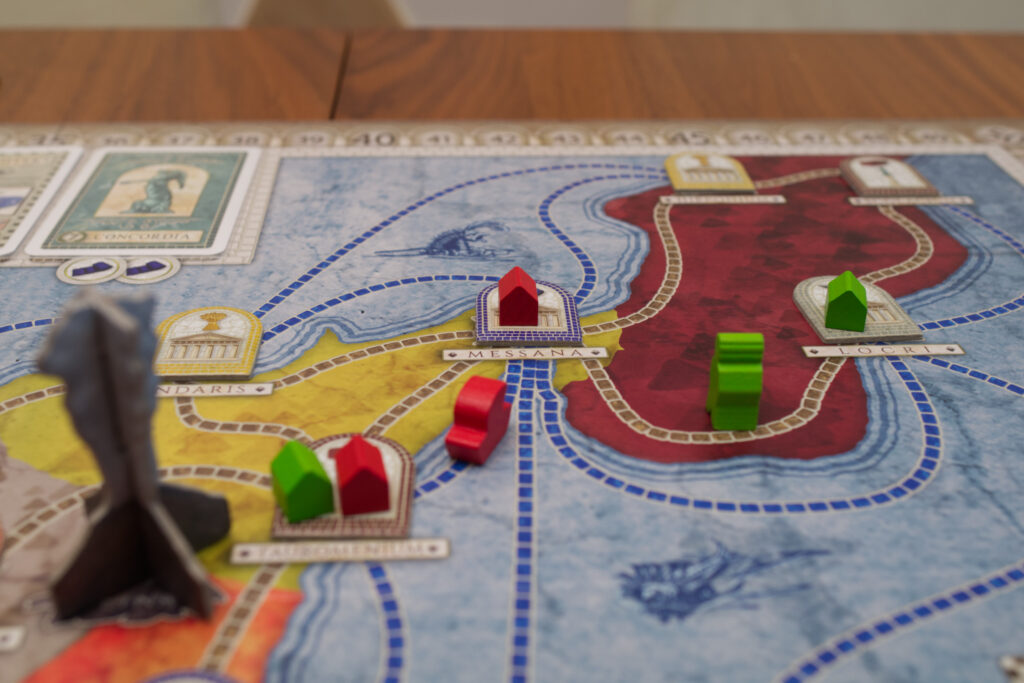
The biggest let down for me in this otherwise excellent expansion lies in the production unfortunately. The volcano looks rather cheap/odd and could seriously have benefitted from some horizontal layers of cardboard being slotted in to give it some dimensionality. Or alternatively by dropping the cloud of smoke and rather have it as more of a pyramidal shape. While it actually helps to have the volcano that visible on the board, I have the strong feeling even with cardboard a better solution could have been found.
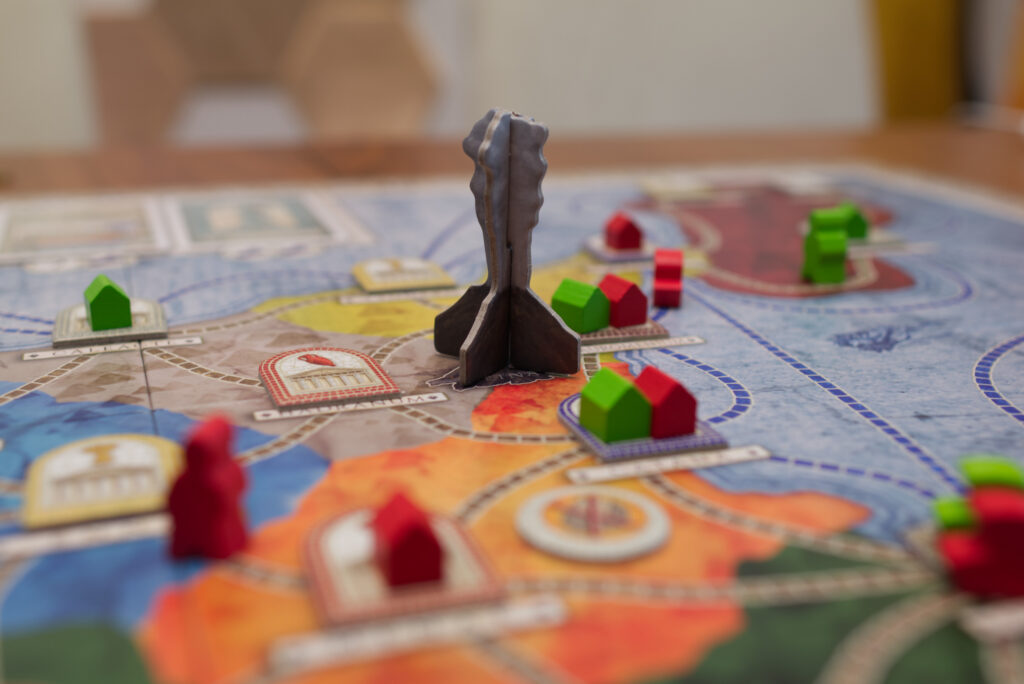
That’s small quibbles however compared to the Roma side. Maybe it’s me, but it just doesn’t look good. The contrast between the region colours and surrounding grass area looks wrong, the used shade of green and texture looks like someone forgot to update the prototype graphics. The art style of the historic city buildings in combination with the regions in combination with the standard Concordia elements (like the scoring track) doesn’t really gel and those historic buildings are almost completely covered during play anyway. It would have looked much nicer if the illustrations would have been placed smaller and next to the name plates. Having the building illustrations where they are also led to a compromise of having the city tiles letters used during setup not on the locations where they usually are but on the mini map bonus fields. It all just feels off.
A glims of how glorious this map could have looked is the ship track. The shade of blue and the underlying texture just looks gorgeous and makes me reason that this could have been the most beautiful Concordia map of them all if the other elements on the board would have fitted more towards that style. Don’t even have me mention the map illustration of the Mediterranean Sea, the pasted on extra-gods scoring panel, or the starting area for the land colonists.
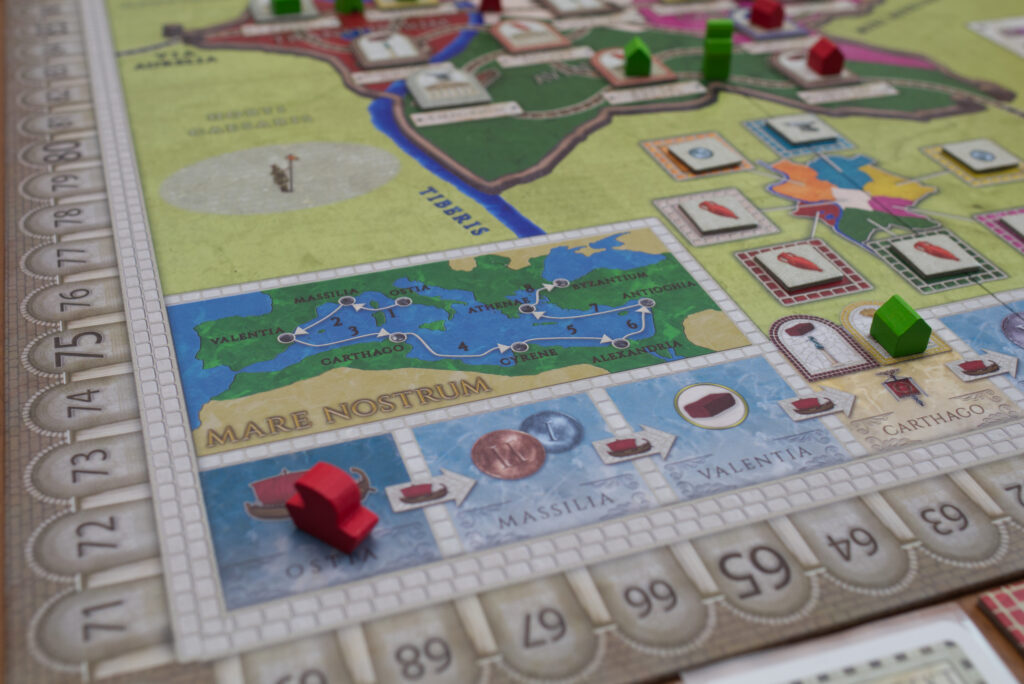
Of course, all of this is irrelevant for the actual game play. The reason why I mention it is that I wouldn’t be surprised if a lot of potential buyers will be passing on this map expansion not due to its mould-breaking mechanisms but because of how Roma looks. I seriously hope PD Verlag will consider re-designing this map for a second print run. Change the outer area from grass to parchment (or have a nicer grass), move and shrink the historical buildings, and redo the Mediterranean map and extra god scoring. It will look glorious! Honestly, I would buy a new copy just for that, which makes the situation sound worse than it is. Roma is fine, I’m just very sensitive to these types of graphic design issues.
But don’t let that critique of the Roma artwork disturb you: if you like Concordia and were looking for a new incentive to bring it back to the table, definitely get this map pack! Even for Sicilia alone, it would have been worth the purchase! As all the other Concordia map packs, it is rather inexpensive in price and so almost a no-brainer. If you are a Concordia Solitaria player, I would say it’s even a mandatory purchase because it adds the replayability to Solitaria that it was lacking a bit before. I actually prefer Sicilia to Roma, so my advice would be to use that side for your first play and move over to Roma if you want something that’s even more different to what you are used to. If you are however new to Concordia, this is probably not the first map pack you should get. I would still recommend Creta / Aegyptus first. All in all though, Concordia Roma / Sicilia is a great reason to bring Concordia back to the table and at its retail price an absolute steal.
